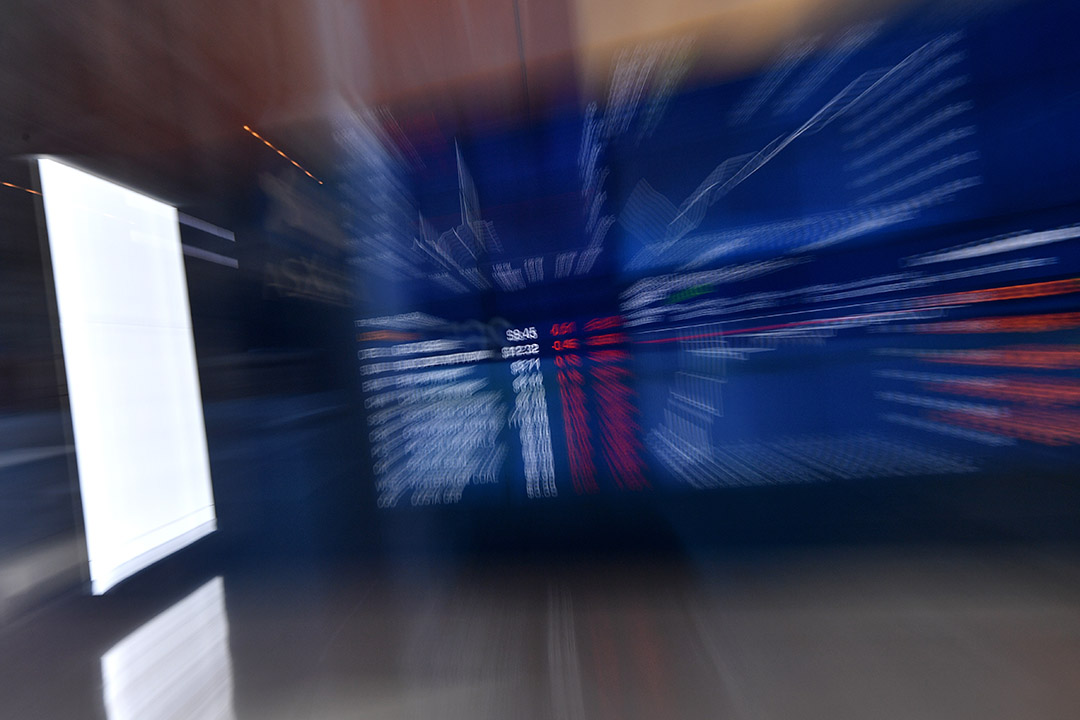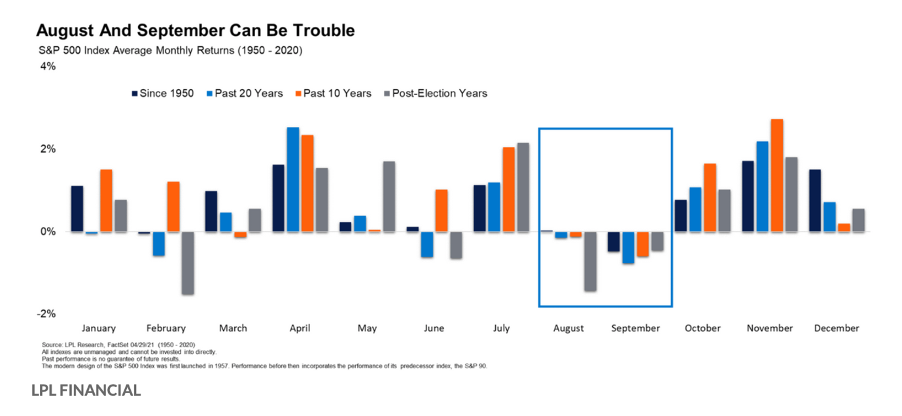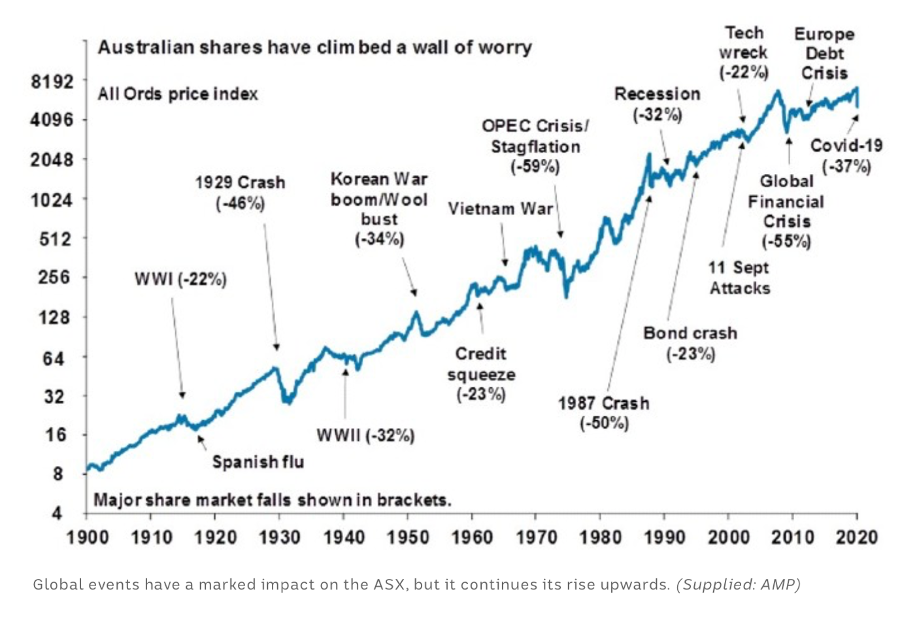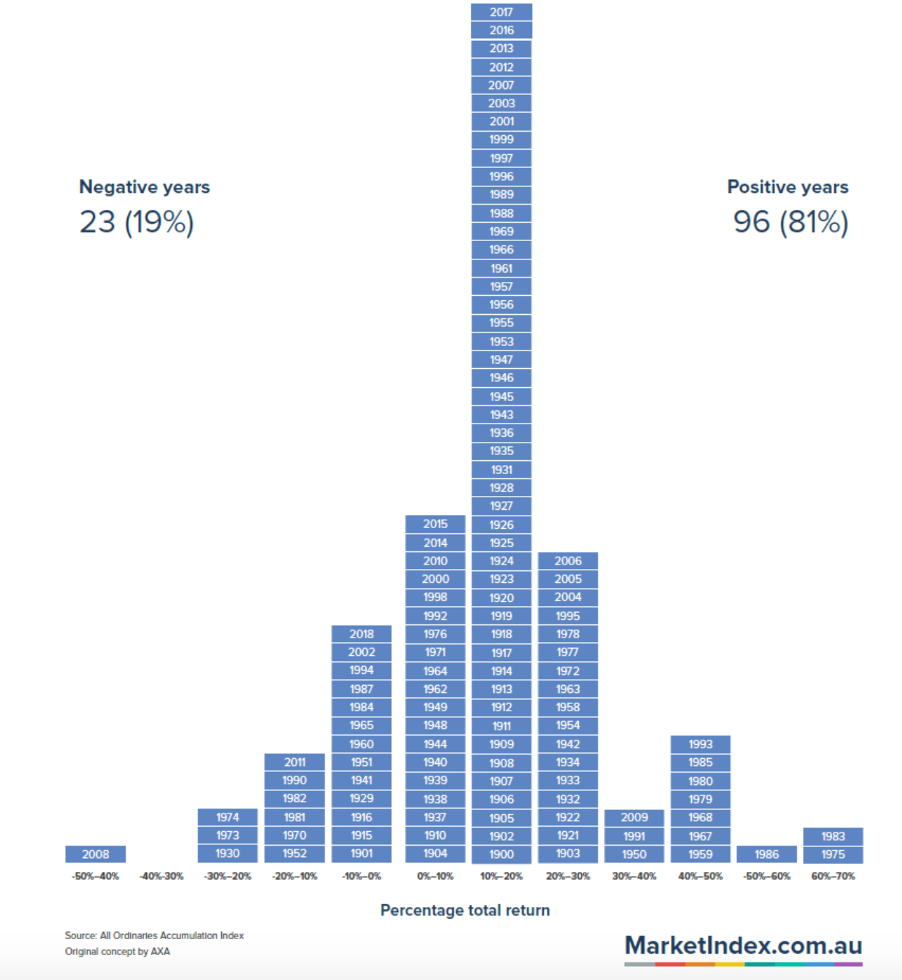

Discredited doomsday merchants often hang their hopes on August and September being the time of year when their big bad calls will come and de-monkey them. Thankfully for many doomsters, most people forget their wrong calls, and even market media commentators seem to have a homework problem as they run these guys’ scary forecasts year in and year out.
It’s funny, in all my years of debating these scare merchants, I can’t recall a woman trying to make her name out of guessing when the next big crash comes, like the Harry Dents of this world do.
Right now, volatility is creeping into the stock market and there’s good reason for it. Let me list those reasons:
Taking all this in, profit-taking players could easily cause a stock market sell off over the next few weeks, but I’m not heading for the hills out of shares and into cash! Of course if I was a trader, I might. But I’m a long-term investor who knows timing the market is easier said than done. When markets sell off, I try to buy quality companies that have become great bargains. It’s why I still hold Macquarie stocks bought in the depths of the GFC for $26 before they dropped as low as $18!
Did I say timing the market is hard? Still, over time, I went from nincompoop to genius with MQG now at $166!
But that’s enough about me. What about you? How will you deal with the next few months, which are the scariest months of all for stock-playing?
This chart below shows how over 70 years — 1950 to 2020 — the weeks of August and September can be stock shockers!

You then see in this chart how life brightens from October into December for market punters and for investors. And given stock markets buy now based on what lies ahead for company profits and the economies that drive those profits, I’m tipping a sell off in coming weeks will drag out buying opportunity players, who know the implications of this chart.
Note how historically the market also does well from January to April. And given the consensus still believes the escalation of vaccinations will power the global and local economies in 2022, I’ll be joining in the buying if we do see some scary weeks ahead.
Helping me to be confident is the willingness of governments around the world to spend to beat the negative confidence effects of this virus. And even central banks are basically saying “read my lips, we won’t raise interest rates if this Delta strain undermines the economy.”
So I’m happy that the expected 2022 strength of vaccinated economies will help the stock market from say October to April in general. August actually looks even more vulnerable, given a really interesting piece of historical data.
Mark DeCambre of Marketwatch.com has delved into August’s troubled relationship with the stock market and quotes the smarties at Bespoke Investment Group, who have noticed a strong year going into August actually makes for a more negative performance in that month. “Since 1983, the weakest August returns tend to come in years where the S&P 500 was up over 10% YTD heading into the month,” he pointed out. In case you haven’t been doing the figuring, the S&P 500 is up over 19% year-to-date, which makes August this year even more vulnerable to a stock dumping.
And August isn’t only a scary month, it’s also a tricky one too.
DeCambre says Jeff Hirsch, editor of the Stock Trader’s Almanac says “the first nine trading days of August tend to be the most prone to weakness.” But late in the month, the expirations of futures and options contracts bring in new negativity that often rolls into September. “The end of August tends to be weaker when traders evacuate Wall Street for the summer finale,” Hirsch wrote. “Expiration week is down more than half the time since 1990, with some sizable losses,” he said.
But history shines on those who are optimistic.
“While the average and median returns for August may be lacklustre, the final four months of the year have seen an average gain of 5.94% (median: 8.03%), with gains 12 out of 14 times (85%). That’s pretty consistent,” analysts at Bespoke Investment Group revealed.
To be objective, I have to remind you that Warren Buffett gave those of us, who like market history on our side, one of his investor lessons when he said: “If past history was all there was to the game, the richest people would be librarians.”
That’s a good lesson to learn. But when history lines up with historically low interest rates, unbelievably accommodating central banks and governments willing to spend to beat recessions, it’s not a stretch to suspect that after a sell off, which I reckon won’t be excessive, there will be a stock market bounce-back.
Finally, if ever you needed a reason to believe in the positivity of humanity, have a look at that chart of the stock market over 71 years. Count up the bars below the 0% line — it’s 15, which means 37 out of 52 weeks are positive. And this explains the enduring upward trend of the S&P 500 and other stock market indexes like our own All Ords or S&P/ASX 200.

And if you need more convincing about being committed to quality stocks over the long term, then have a look at the chart below, which shows how many negative years compared to positive years the stock market has spat out between 1900 and 2017. What about 2020 — the Coronavirus year? That has to be a negative year you’d be thinking, but in fact the All Ords was up 40 points on the year!
Need more reasons to believe in the stock market over time? Well, check this out.

By the way, I’m not alone in believing upside lies ahead for stocks, as AMP Capital’s Shane Oliver wrote this week: “While shares remain at high risk of a short-term correction…we ultimately see the rising trend [for stcoks] continuing and bond yields trending up again once it’s clear that economic recovery will continue despite the disruption from Delta.”